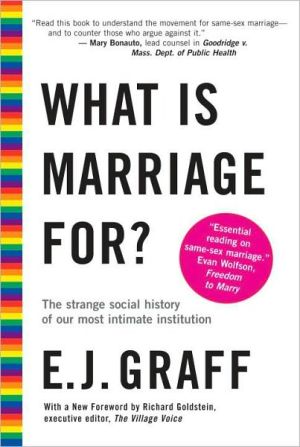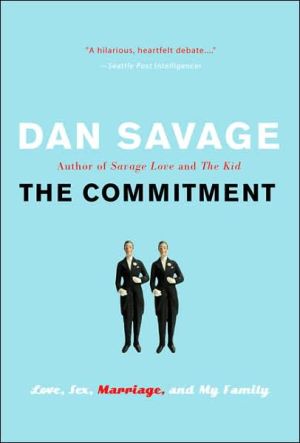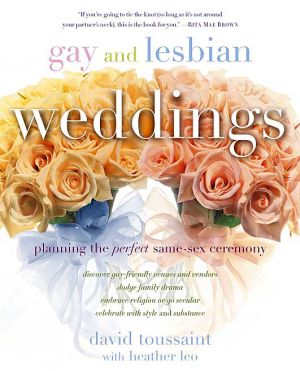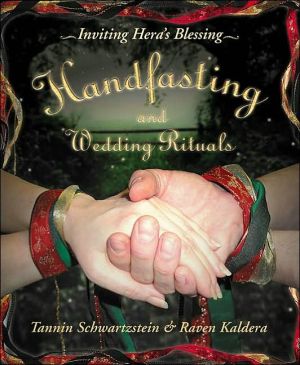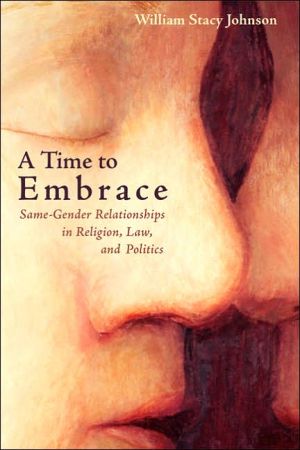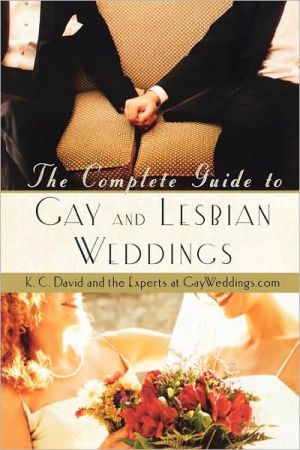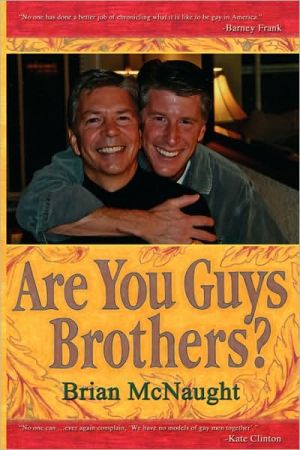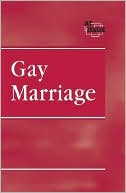What Is Marriage For?: The Strange Social History of Our Most Intimate Institution
In the wake of the Massachusetts Supreme Judicial Court's historic Goodridge decision, a reissue of the bible of the same-sex marriage movement\ Will same-sex couples destroy "traditional" marriage, soon to be followed by the collapse of all civilization? That charge has been leveled throughout history whenever the marriage rules change. But marriage, as E. J. Graff shows in this lively, fascinating tour through the history of marriage in the West, has always been a social battleground, its...
Search in google:
After Graff and her partner held a ceremony celebrating their union, she became urgently determined to place what they had done in the context of modern western civilization. She looks at money, sex, babies, kin, order, and heart. Her account was published in 1999, and has been called up again to serve in the current debate about legal gay marriage in the US. Richard Goldstein has adapted his September 2003 Village Voice article "The Radical Case for Gay Marriage" as a foreword. Annotation ©2004 Book News, Inc., Portland, OR
What Is Marriage For? \ \ By E. J. Graff Beacon Press \ Copyright © 2004 E. J. Graff\ All right reserved.\ ISBN: 9780807041352\ \ \ \ \ Chapter One\ \ \ Money\ \ \ Often when I tell people i'm writing a book called What Is Marriage For?, they answer: toaster ovens and silverware. Or, getting dental benefits. Or, passing on property. While they may be joking, they're also correct. Whether through the kind of dowry that today's middle-class parents pass on in wedding gifts and home down payments, or the corporate mergers of medieval aristocratic families that might have taken years to negotiate, or the small businesses launched when two well-trained vineyarders joined their complementary skills and marriage portions, marriage has always been a key way of organizing a society's economy. Or to put it more bluntly: marriage is always about money.\ How visible (or rather, how openly acknowledged) that link is—and just how tightly or loosely it's enforced—varies from one economy to the next. It's no coincidence that a world in which one's financial prospects have come dramatically unmoored from one's marriage prospects—in which how you make your living is separate from where you make your bed—is a world whose marriages much more easily unravel. And it's no coincidence that a world in which each individual can (and must) make his or her own financial future—men andwomen equally exploiting their own brains, brawn, or brio—is a world in which two people of one sex claim the freedom to marry.\ Money is one of this society's most clandestine and volatile subjects, certainly more so than sex. (Would you find it easier to ask a new friend about sex life or income? Psychologists, at least, find the latter far more taboo.) In this, we're quite different from most societies. In "traditional" marriage—that is, marriage in most societies across culture and history—people talk first about money, assuming that after the important financial matters are arranged, the couple can work out such details as sex and affection and maybe even love.\ How did marriage get turned on its head? How is it possible that today we talk first, last, and endlessly about the heart, considering it somewhat rude (almost until the wedding day) to talk directly about something so private as finance—an attitude almost directly the opposite of our ancestors'? That question is the main subject of this chapter, which traces lightly the economic history of marriage. The short answer is: Today, your financial future is no longer so completely determined by how you marry. That fact, which we take for granted, has been a social earthquake that over several centuries has shuddered deeply into the foundations of marriage, transforming it into the institution we know today. Thus, alongside the nineteenth century's accelerating capitalism (which made it possible for each of us to earn our livings, separate from our families) came accelerating changes in our marriage ideals—changes we'll see throughout this book. All these changes, from the debates over such "unnatural" proposals as mother-custody and contraception to debates over no-fault divorce and same-sex marriage, grow from money's weakening link. Precisely because we can each make our own living, with or without our families of origin, with or without a spouse, we have vastly more choice in matters of the heart.\ We could probably date the conception of "modern" marriage at around 1850, with its gestation through the Gilded Age, and its birth about 1920. Not coincidentally, serenading that pregnancy and birth has been a steadily rising chorus of outcries about the death of marriage and the family. By the 1920s every third magazine article seemed to be titled "Will Modern Marriage Survive?" Of course, reports of marriage's death have been greatly exaggerated: even laying aside the peculiar 1950s (which none of "the family's" doomsayers foresaw), marriage remains outrageously popular, divorce statistics and all. And yet money still can't quite be separated from marriage; today's couples are necessarily financially intertwined in ways large and small. Although it may not define our lives entirely, the last half of this chapter looks at how and why marriage remains a financial contract enforced by the state. Or to put it in terms of this book's guiding question, this chapter closes with a look at what (in money's terms) marriage is for today—and at why same-sex couples now belong. But that's jumping ahead of our story, which begins long before Adam Smith's invisible hand started to remold marriage into the institution we now know.\ \ \ Exchanging It: The Marriage Market\ \ \ Just about every human language has words for the various portions exchanged or promised in the marriage transaction: bride price, dowry, dower, antefactum, arras, asura, biblu, bridewealth, chidenam, coemptio, coibche, curtesy, dahej, desponsatio, dower, donatio ante or propter nuptias, dos ex marito, exovale, faderfio, hedna, lobola, loola, maritagium, matan, meta, metfio, morgengabe, mohar, mundium, nedunia, nudunnu, pherne, proix, stridhan, sulka, tercia, tinól, tinnscra, titulo dotis, vara-dakshina, yautaka. Exactly in what directions that alphabet of money will travel when a couple marries—and whether as cash, cattle, cowrie shells, farm implements, furniture, houses, labor, land, linens, orchards, pigs, plate, quilts, or some other gift—varies among cultures and classes. Usually social systems have either dowry or bridewealth. Dowry travels from the bride's family to the groom or his father, while bridewealth or bride price travels from the groom's family to the bride or her father. Almost always, there are other gifts or feasts traveling in additional directions as well, whether they be farm service owed to the new brother-in-law, or mementos given to every wedding guest. Some of that money is compensating one family or the other for the loss of a worker; some is celebratory potlach; some is roped off as "dower" to guarantee the bride support when she's deserted or widowed—when, in other words, she's a dowager. As one historian puts it, "marriage for love has traditionally been assumed to be the dubious privilege of those without property." Without the marriage exchange, most traditional economies would cease to turn.\ The rules in these exchanges are so varied and intricate that any informed anthropologist or historian will wince at how this brief section simplifies them into a few principles. But anyone within any given group knows how their own system works—and finds that system quite "natural." Everyone knows that exactly what changes hands when two people marry must be explicitly haggled over by the families involved and discussed all over town. If, for instance, a young premodern French bourgeois made her debut and was not married within the year, there'd be some nasty gossip about ... the size of her dowry. Of one particular seventeenth-century match, one pair of historians write, "It did not matter that anyone of good society in Annecy was capable of providing a fairly exact assessment of the two [orphaned and sole heirs] young people's 'expectations' (each had 70,000 livres in property) or that their marriage had been taken for granted by everyone for ages: the actual finalization of the marriage took many long months." "Finalization" is a softer word for haggling —exactly what would go to whom, and when. During most of the history of the West, the engagement feast was when the two families finished negotiations and finally signed, witnessed, and notarized the marriage contract (and perhaps let the two start living together). The marriage ceremony itself was usually when money (or its stand-in, the ring) actually changed hands, a ceremony that was—at least in classes where enough money changed hands for this to matter—for many years overseen by a notary, not a priest.\ All this sounds abominably mercenary and soulless now, so much so that we may feel smugly superior to this prostitution of something so sacred and personal as one's life partner. But for thousands of years, the marriage bargain your parents made for you was more comparable to today's college education than to today's marriages. Any responsible middle- or upper-class parent (or class aspirant) will at his child's birth start worrying about, and maybe saving for, tuition, often with some investment from the grandparents. It's all very well to say you can be anything you want to be when you grow up, but achieving that will be a lot harder if you go to your local community college than if you go to Yale. In fact, for the first twenty or so years that women could take a college education for granted, it was still seen as a dowry: she was there to get not a career but her "MRS" degree.\ In the same way, traditionally one's offspring would have a much better chance of marrying, and therefore living, well in every sense if they brought a hefty marriage portion. Perhaps no era's parents can guarantee their children's future—charm, talent, smarts, looks, luck, and effort all matter on the career market as on the marriage market—but parents rightly worry about giving their children the best possible start.\ Of course, your parents and siblings cared about your marriage not just for your sake, but also for their own. It's hard to imagine now how fully your marriage could define the future of all your relatives and allies—who they would socialize with, who they could call on in hard times, who would be able to present them at Court, which cows would be left for their own inheritance. "Many marriages have been, as everyone knows, causes of a family's ruin, because concluded with quarrelsome, litigious, proud, or malevolent individuals," wrote one fifteenth-century Tuscan. Not an individual— individuals. That marriage was a critical group merger was simply common wisdom. Every marriage was such an important shift in the social and economic landscape that when Florence put a cap on dowries, it was essentially an antitrust law. (Those good free-market capitalists the Medici revoked the cap, stating that "marriages must be free, and everyone should be free to endow his daughters, sisters, and other female relatives as he sees fit and as he likes, because one must be able to arrange his affairs in his way." Move over, Steve Forbes!) And so your marriage choice was not simply your own. Your family and friends were your board of directors, experienced people with a direct stake in guiding you to a successfully concluded merger. Breach of contract suits were seriously enforced because not just emotions and reputations but money and property—very serious things indeed—had been painstakingly engaged, and while negotiations had been going on the merchandise (not just the girl but property on both sides) had been taken off the market during selling season.\ In other words, for most of history the phrase "a good marriage" meant something more like the phrase "a good education" or "a good job" than the shimmering rainbow of emotions that phrase implies today. Sure, marriage—like education or work—brought emotional satisfaction, but how could that satisfaction be disentangled from other, more practical rewards? Not without reason did people talk about marriage markets, marriage brokers, and marriage bargains: marriage was society's economic linchpin. For millennia, until there was a marriage contract— cartas de arras, ketubah, pacta dotalia —ensuring the new family's future against penury and starvation, nobody married.\ If nobody could marry without money, and if large amounts of money changed hands at marriage, society cared about dowries in a way far more urgent than we might think from its quaint, white-lace associations. Not only did every marriage bargain reshuffle social and economic power, but without marriages there would be no legitimate babies and the state (or religion) would collapse for lack of citizens or parishioners. "It is a matter of state concern that women should have secure dowries," one Roman legal scholar wrote. Medieval peasant widows contributed to funds for poor girls' dowries, as philanthropists in our time might adopt an inner-city class and guarantee their college tuitions. In 1425 the city of Florence—concerned that, after several plagues, there weren't enough marriages and births—launched a savings-bond institution (the Monte delle Doti, or Dowry Fund) in which a family could invest for a daughter's future dowry with returns of up to 15.5 percent compounded annually, with both capital and interest paid to the husband after consummation (and immediately taxable). Eighteenth-century Spanish legislation tried to limit dowry to no more than twelve times the annual income of the head of household. And suits over dowry—either because the cooking pot, two carpets, and six shillings were never paid, or because the silk promised to be worth 900 florins was assessed at only 750 florins—fill every era's records. The economic world simply couldn't keep turning if the marriage bargain wasn't kept.\ Not only did societies worry explicitly over the size and transfer of marriage payments, but—naturally—so did families. Dante famously noted that fathers in his time were appalled by the birth of a daughter—already anxious, in an era of extreme dowry inflation (much like tuition inflation at prestigious American colleges today), about how they would raise the fortune needed to marry a girl off. No wonder a Florentine father started sweating at each daughter's birth, aware that he might have to liquidate goods from an entire mercantile voyage in order to marry off Maria, and knowing that the higher his daughter's dowry (which everyone in town would know) the higher his credit rating and status could rise. Meanwhile, Maria's younger sisters had to be prepared to end up in convents, which required far smaller dowries, unless there came a dowry-bequest from some widowed aunt or godmother's will—known to us as the fairy godmother who magically got her goddaughter to the ball.\ Sons as well as daughters might be unable to marry because of a family's limited treasury. Historian Lawrence Stone has shown that, among the families of sixteenth-century British gentry, male heirs married (and almost all of them did) by an average age of twenty-one or twenty-two, while their younger brothers, who would inherit little or nothing, didn't marry until their early thirties. That's because the younger brothers might take ten years to earn enough to attract a socially acceptable (and acceptably dowried) wife. Depending on the era, from one-fifth to one-fourth of the British gentility's younger sons never married at all; before 1650, three-quarters of the daughters of Milan's aristocracy were sent to convents; and in the eighteenth century—a time of dowry inflation—one-third of the daughters of the Scottish aristocracy stayed single.\ Some of these exchanges would strike us as particularly crude. Marriages in the early Germanic clans were distinctly financial transactions: when his family handed over the money, her family handed over the girl. And if your family had money and ambition, you certainly might be married off to a toad. Maybe you'd be allowed to reject one or two suitors suggested by your family or "friends" (those people with a financial or political interest in your family's estate); you might even, if you were male, be able to say no to up to half a dozen brides—but sooner or later you had to say yes. In a famous fifteenth-century letter a British woman, Agnes Paston, writes proudly that, after her daughter obstinately refused to marry on command, the girl was confined with no visitors and "hath since Easter the most part been beaten once in the week or twice, and sometimes twice on a day, and her head broken in two or three places." If you were male, the more traditional method of persuading you to marry was to withhold your inheritance—keeping you a household subject, constantly waiting on your allowance with almost no way to make an extra dollar (or pound or lira). The authority and cohesion of the traditional family, in other words, depended in no small part on the fact that you were dependent—not just for tax purposes but in fact.\ The more money involved, the younger (and more tractable) you were likely to be when married. Your Genovese mercantile family might want to go into shipping with a particular prosperous family—and so you'd be engaged by age eight or ten or at most twelve and sent to live with his family (perhaps as his sexual playmate), so that by the time you were officially married you'd have been raised in, and accustomed to, his household's habits. Or your sixteenth-century Corsican clan might decide that engaging you to your father's murderer (and sending you to his house as security, even before the official marriage and payment) was the only way to stop the vendetta. Or your eighteenth-century British merchant father might want his grandchildren to be nobility and therefore marry you to the son of an impoverished earl who needed to pay off his mortgage or cancel his gambling debts without cutting back on his lavish parties. (To marry up the social scale, you had to fork over a sharply higher dowry: as Gatsby knew, social climbing costs extra.) Money, in other words, could be a proxy for status and power—and the more your family had, the less voice you had in your marriage.\ Today, money management is the number one source of tension between spouses. Imagine how much more tension there could be when not just you and your husband but both families were involved. A Roman father-in-law could peremptorily take back his daughter—and deprive his son-in-law's estate or business of her dowry—if said son-in-law did something he disliked. Even among medieval feudal folks, your family's stake in your dowry could actually protect you from mistreatment: if your husband ran off with some young thing your family could insist he return your dowry, which might ruin his business or estate. (Of course, if you were the one who took a lover, you were out on your heels, no cash back.) On the other end of the social scale, a girl married off without a dowry or dower was often no better than a sexual slave, with no say in her new household, no support from her own family, and nowhere to go if the new husband died or tired of her. Billie Holliday was saying nothing new when she sang, "God bless the child that's got her own."\ We shouldn't let ourselves feel too superior to our predecessors' financial finagling. Think of all the lawyers you know married to other lawyers, doctors to doctors, or others who've married in a comparable strata—an architect to a playwright, a truckdriver to a file clerk, Tom Cruise to Nicole Kidman, Harold Evans to Tina Brown. As free as your choice may feel, your education really has worked much like a traditional dowry. What else, after all, do dating services do but (like traditional marriage brokers) match age, class, income, and ethnic background—via such proxies as whether you listen to Nirvana or Serena or Amy Grant, eat mesclun or cream-of-mushroom-based casseroles or kimchi? Love isn't blind: it's easiest to get along with people who have similar backgrounds and interests. (Which is not to say mixed marriages—whether mixed by religion, class, race, gender, or some other variable—can't work; it's just that besides bridging ordinary family and personality differences, couples also have to leap the extra cultural gap.) This might be why Samuel Johnson insisted that "marriages would in general be as happy, and often more so, if they were all made by the Lord Chancellor, upon a due consideration of the characters and circumstances, without the parties having any choice in the matter." Reverend Moon would approve. "The arranged marriage works far less badly than those educated in a romantic culture would suppose ... partly because it is a fact that sentiment can fairly easily adapt to social command," writes historian Lawrence Stone—at least so long as everyone expects companionship instead of intimacy and passion. Since you could not marry without others' financial contributions (not to mention the haggling and string-pulling to get into the presence of, and to get a favorable contract with, a family worth marrying); since your marriage had to be concluded in a way that wouldn't deprive others of their inheritances; since the entire town was involved in enforcing the exchange—how could anyone possibly consider your marriage an entirely private romance?\ \ \ Making It: The Working Marriage\ \ \ All that inherited wealth may nevertheless seem exotically foreign, impossibly luxurious. The difference between those well-endowed (financially, that is) characters in Beaumont and Fletcher, Edith Wharton, and most of us today is that I—and probably you—have to earn a living, before or after marriage. So did most of our ancestors—who saw marriage primarily as a complete plan of labor, the way you selected your most important workmate.\ For most cultures through most of history, husband and wife have been interlocking jobs. "For the shoemaker, the cooper, the fishmonger ... the wife was business partner, working by his side." Whether Roman or medieval or premodern, a tradesman's wife kept the business's books, sold goods in market, and handled a range of essential tasks that differed depending on her husband's job. "The farmer's wife generally tended livestock, particularly chickens and pigs ..., grew vegetables, did dairy work, kept bees, preserved and pickled, helped prepare goods for sale and perhaps took them to market, lent a hand at harvest and during haymaking, and exploited gleaning rights or the use of commons where such existed." In parts of Europe—the Alps or Pyrenees, say, or Ireland—the husband might be gone for up to nine months a year to bring in cash, leaving the wife to run the farm. In England a jail was essentially a private business run by a husband and wife; if he died and she wanted to keep the franchise, she had to promise to marry within the year (and maybe even let the civil authorities know who she had in mind). Or if his business didn't assign her specific tasks, the money she brought in by spinning, brewing, making sausages, weaving, preserving and selling fruit, or feeding and keeping house for lodgers and travelers, was essential capital and income. The family business simply couldn't run without both him and her.\ "Whatever sadness a man experienced at the death of a young spouse, a farmer or an artisan simply had to find a replacement. He could not run a farm or a business alone.... in seventeenth-century Germany 80 percent of all widowed men found new wives within a year." Which meant the wife was too important to spend her time doing menial housework: unless she was the poorest of the poor, for most of history she had at least a housemaid, and maybe (if the family was moderately prosperous) also a kitchenmaid, nursemaid, dairymaid, laundrymaid. The babies were swaddled tightly and hung by the fire, or left in the care of the five-year-old, or sent out to nurse to free up the household's mistress. It's simply ridiculous to call the mom-at-home system more "traditional" than the dad-at-home system: only in the nineteenth century was Mother demoted to housemaid, while Father was banished from the house.\ Where did all those maids come from? They were saving up for their dowries, so that someday they could graduate to wife. The good news is that the less property you got from your family, the more choice you had in who you married; the bad news is that you had to spend ten or fifteen years in hard labor earning that before you "graduated" into being a wife (i.e., mistress) or husband (i.e., master) yourself. Just as boys headed out to find a trade, girls often set out at age ten or twelve or fourteen to earn a dowry—going out to be a housemaid, nursemaid, laundrymaid, dairymaid, cook, textile worker in a silk or lace workshop, or some other insecure and low-paying job that allowed them, fifteen years later, to come home with enough capital to make a "good" (i.e., remunerative) marriage. Which is why Europeans traditionally married somewhere between twenty-five and thirty, for women, or twenty-eight and thirty-five, for men. Just as today's middle class spends a long adolescence getting educated for a profession or trade—education being the personal capital of our time—so our ancestors spent that time saving enough to stock the farm or fund the shop or tavern. So long as the pair launched their marriage/business with their own money, their parents (if still alive) let them choose a spouse for themselves.\ But exactly what would "choice" mean in a village with somewhere between thirty and two hundred families, giving you maybe a handful or a score of eligible women or men in your class and age range? "In English villages," writes historian Olwen Hufton, "up to 80 per cent found a spouse from within a ten-mile radius, and the same seems to have been true in most of rural Europe." How many could possibly have been born in your age and class range— and survived to adulthood— and have enough money to marry—within those ten miles? Unmarried young men used cudgels to warn off outsiders who began courting "their" girls, or threw what historians call "barrier charivaris" that sound like small and barely contained riots—for instance, crowds of screeching, jeering, drum-banging young men might force the just-marrieds onto donkeys, flinging mudballs or ripping their clothes and chasing them through town until they paid a "fine." A charivari might be held if a widow or widower married one of the few eligible twenty-somethings, or if a girl married outside the village, thus reducing the potential spouse pool by a hefty percentage—and making it probable that, just for lack of possibilities, some guy in town would never marry. (And you thought your odds were bad.) In the extremely poor French parish of Sennely en Sologne, the pastor complained, "They get married out of financial interest rather than any other inclination. Most of them when looking for a bride only ask how many sheep she can bring in marriage.... It is a daily occurrence to see a man take a wretched bride, pregnant by someone else and adopt the child for a modest sum." Even outside the villages, how much choice would you have if you were a housemaid who rarely had a half-day off—and therefore met mainly the tradesmen who came to the house?\ In reality, people often knew in advance who could marry whom. In the classes that worked for a living, dowry was a kind of "premortem inheritance," the money and property that made it possible for the new couple to start their farm or shop (just as today's middle-class young people get their early inheritance as college education and house down payments, and poorer people through in-kind service when relatives renovate the house or help raise the kids). You were pegged to the land because, as one eighteenth-century parishioner declared, "One cannot take one's vineyard with one." One historian explains that double marriages—siblings or cousins from one family marrying siblings or cousins from another—were common because "A son who inherited a third of a house, a quarter of a parcel of land, could only hope to acquire a home of his own by marrying a girl from his village who had inherited fragments of the same kind of immovable property." One couple gets his family's house and farm, the other gets hers—and everybody's ready to start work.\ The skills you brought to the marriage could be just as important. For instance, vineyards and vigneronnes (women professionally designated as grape-growers and winemakers) were simply too valuable to let escape from the familiar circle—and so up to 50 percent of marriages were between cousins or even uncles and nieces. Meanwhile, having watched your cousins and neighbors grow up, you knew for yourself how reliable and well-honed were their work habits. Who'd want to lose half a year's crop by training some unknown from beyond the horizon? As another pair of vineyard petitioners declared when petitioning the Church for a dispensation so that their children could marry inside the forbidden incest limits, "We are neighbors and we know all about one another." That's not so far from the Maryland planter who married his best indentured servant rather than relinquish (or pay for) her labor, as his 1681 marriage contract made explicit: Nicholas Maniere's wife was to "Dresse the Victualls milk the Cowes wash for the servants and Doe allthings necessary for a woman to doe upon the sd plantation." Was that a marriage or an employment contract? Dower—her share of the estate if he died or deserted—recognized that without her contributions there was no estate. When our predecessors said marriage was hard work, they weren't talking about feelings.\ Of course such marriages included affection. But if your life's income was based on your marriage, you wouldn't be so foolish as to marry only because you "fell in love," any more than you'd hire a business partner based only on sexual infatuation (and if you would, remind me never to buy your company's initial public stock offering). Rather, you'd look more for a stable, reliable, companionable workmate, someone you could get along with, someone you might well grow to care for by sharing your work in the day and your bodies at night. Which is why ordinary individuals, like small business owners, didn't have boards of directors overseeing their marriages, but might still, before deciding on a marriage, consult others who had their interests at heart. As a historian of medieval peasant families writes, "Medieval literature does not contain the same intensity of sentimentalization of family that modern literature does.... Affection certainly existed among family members—that shows up clearly in wills—but not sentimentalization."\ No wonder divorce rates were low before capitalism transformed marriage's meaning. You'd have to be a terrible worker for your spouse to want to break up the entire household economy and search for someone new. Can you imagine Bill Gates firing 50 percent of his employees because he disliked them personally—making his business vulnerable to Sun and Oracle and Netscape? And no wonder societies discouraged divorce: what economy could survive if estates and businesses were constantly being ripped apart and refigured based on nothing more solid than emotions? Someone had to be relied on to bring in the crops, to spin cloth, to make wine, to hold power—and that someone was the married couple. Mass divorce could too easily lead to an unthinkable mass deprivation, not just for the couple but for everyone.\ We might think that contemporary professor/professor or actor/actor pairs are not so different from that traditional working marriage. A shared investment in and knowledge of each other's daily work lives, the ability to rely on each other for feedback, sympathy, and advice—all that's a powerful bond. Madeline and I are each other's number-one career consultants and sounding boards—strategizing how to talk to our editors, ruthlessly criticizing and cheering on each other's manuscripts. Our private joke is that we're not just a couple, but the executive vice presidents of our own editorial corporation. But despite our shared passion for language and understanding, we're quite different from the traditional work-unit marriage. Like my brother the biologist and his wife the physician, or my friend the marketing manager and her husband the management consultant, we may love and rely on each other, we may buy things together, we may build a family together—but our work lives are elsewhere, interwoven with familial strangers. Very rare in the first world is the "traditional" small business that requires every family member's work for the whole to succeed—the farm family, the Korean grocery store, the Thai restaurant. Your work and your spouse's could probably be disentangled without either hurting your employers or slowing the economy. For better or for worse, money has evaporated as the cement of the "traditional" marriage, leaving us radically free.\ \ \ Continues...\ \ \ \ Excerpted from What Is Marriage For? by E. J. Graff Copyright © 2004 by E. J. Graff. Excerpted by permission.\ All rights reserved. No part of this excerpt may be reproduced or reprinted without permission in writing from the publisher.\ Excerpts are provided by Dial-A-Book Inc. solely for the personal use of visitors to this web site. \ \
Will same-sex couples destroy "traditional" marriage, soon to be followed by the collapse of all civilization? That charge has been leveled throughout history whenever the marriage rules change. But marriage, as E.J. Graff shows in this lively, fascinating tour through the history of marriage in the West, has always been a social battleground, its rules constantly shifting to fit each era and economy. The marriage debates have been especially tumultuous for the past hundred and fifty years - in ways that lead directly to today's debate over whether marriage could mean not just Boy + Girl = Babies, but also Girl + Girl = Love.
